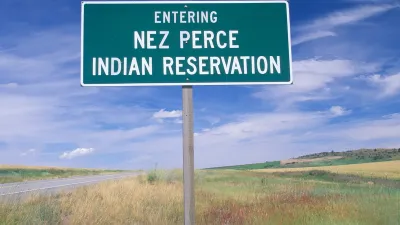Like music, environmentalism's tenets evolved from precedent, and Kaid Benfield hopes they are evolving still.
"Can placemaking – in short, the building or strengthening of physical community fabric to create great human habitat – be a 'new environmentalism'? The question is posed by a provocative short essay, which I first discovered in 2011. Written by Ethan Kent of the Project for Public Spaces, the article continues to make the rounds. The essay influenced my own writing (“The importance of place to sustainability”), and I’m returning to it here because the issues Ethan has raised continue to be important."
"My answer, by the way, is a qualified yes: creating the right kinds of places for people, particularly at the neighborhood scale, has indeed become a new approach to environmentalism and one to which I am deeply committed. But I qualify my answer because placemaking is by no means the only important aspect of today’s environmentalism (not that Ethan suggested that). In addition, I think the physical building of community can become even stronger as an environmental tool by becoming somewhat more explicitly environmental in its content. I’ll get into all that in a minute.
"First, though, I want to explore the phrase 'new environmentalism' a bit. Years ago, the well-known urbanist Andres Duany was kind enough to write a cover blurb for NRDC’s then-new book about smart growth, Solving Sprawl. Andres wrote, 'Finally, here is a book on the environment that includes the human habitat as part of nature. This may be the first text of a ‘New Environmentalism’.' I was quite honored by the flattery that our book was being considered important and new, and by the parallel language to 'new urbanism,' bestowed by one of that movement’s pillars. Might our way of thinking – advocacy for smart, green 'people habitat,' if you will – be earning its way to an impact on the environmental movement as significant as that brought by the new urbanists to architecture and planning?"
FULL STORY: Is placemaking a “new environmentalism”?

Maui's Vacation Rental Debate Turns Ugly
Verbal attacks, misinformation campaigns and fistfights plague a high-stakes debate to convert thousands of vacation rentals into long-term housing.

Planetizen Federal Action Tracker
A weekly monitor of how Trump’s orders and actions are impacting planners and planning in America.

San Francisco Suspends Traffic Calming Amidst Record Deaths
Citing “a challenging fiscal landscape,” the city will cease the program on the heels of 42 traffic deaths, including 24 pedestrians.

Defunct Pittsburgh Power Plant to Become Residential Tower
A decommissioned steam heat plant will be redeveloped into almost 100 affordable housing units.

Trump Prompts Restructuring of Transportation Research Board in “Unprecedented Overreach”
The TRB has eliminated more than half of its committees including those focused on climate, equity, and cities.

Amtrak Rolls Out New Orleans to Alabama “Mardi Gras” Train
The new service will operate morning and evening departures between Mobile and New Orleans.
Urban Design for Planners 1: Software Tools
This six-course series explores essential urban design concepts using open source software and equips planners with the tools they need to participate fully in the urban design process.
Planning for Universal Design
Learn the tools for implementing Universal Design in planning regulations.
Heyer Gruel & Associates PA
JM Goldson LLC
Custer County Colorado
City of Camden Redevelopment Agency
City of Astoria
Transportation Research & Education Center (TREC) at Portland State University
Jefferson Parish Government
Camden Redevelopment Agency
City of Claremont




























